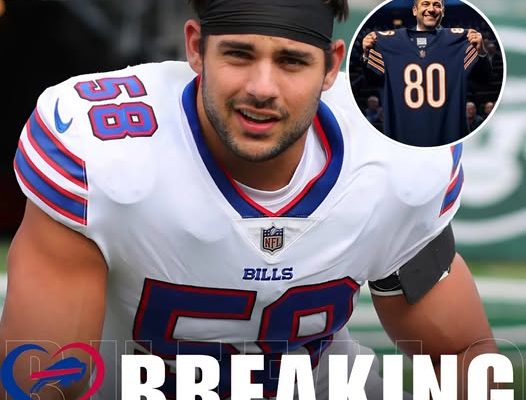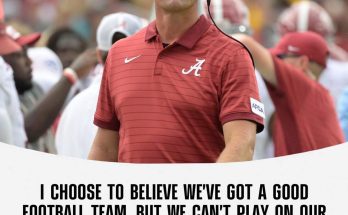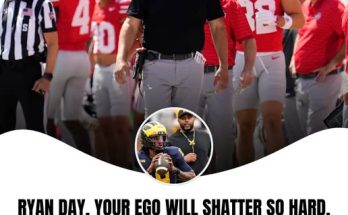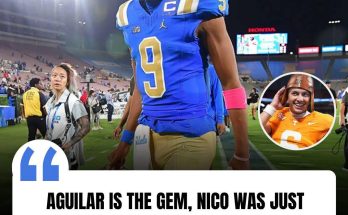The news reverberated through the NFL like a seismic shockwave: Matt Milano, the indispensable, All-Pro linebacker for the Buffalo Bills, was unexpectedly headed to the Chicago Bears. For a player who had become synonymous with the hard-nosed, relentless Bills defense, a cornerstone of their recent success, the move felt almost unthinkable. Yet, as the initial surprise settled, whispers began to coalesce into a more concrete narrative: this wasn’t simply a free agency splash, but rather a departure rooted in deep, internal disagreements within the Bills’ defensive ranks, primarily centered on shifts in leadership and the thorny issue of play-calling responsibilities.
To truly grasp the magnitude of this move, one must first appreciate Matt Milano’s journey in Buffalo. Drafted in the fifth round of the 2017 NFL Draft, Milano was, in many ways, an unheralded gem. He wasn’t a top-tier prospect with pre-draft hype, but his intelligence, instincts, and relentless motor quickly caught the eye of the Bills’ coaching staff. From his rookie season, he carved out a role, evolving into a full-time starter by his second year. What followed was a consistent ascent, culminating in a truly dominant 2022 season where he earned First-Team All-Pro honors. That year, he was everywhere: stuffing runs, making acrobatic interceptions, generating pressure, and acting as the communication hub for a Bills defense that ranked among the league’s elite. He was the quintessential modern linebacker – athletic enough to cover tight ends and running backs in space, yet stout enough to take on blocks and shed to make tackles in the run game. His ability to diagnose plays quickly and his relentless pursuit made him a nightmare for opposing offenses. More than just his on-field production, Milano embodied the grit and tenacity that became the Bills’ defensive identity under head coach Sean McDermott and then-defensive coordinator Leslie Frazier. He was the heart and soul, the unyielding engine that powered their defensive machine.
However, the past two seasons had been marred by injuries for Milano. A significant leg injury in Week 5 of the 2023 season sidelined him for the remainder of the year. Then, in the 2024 training camp, a bicep tear kept him off the field until Week 13. While he played admirably in the limited action he saw, particularly in the playoffs, the back-to-back injury-plagued campaigns undoubtedly played a role in the contract restructure he agreed to with the Bills earlier this offseason. This restructure, which essentially amounted to a pay cut with incentives, was seen by many as a precursor to his potential departure in 2026, when his contract was set to void. The Bills, ever mindful of their salary cap, were seemingly preparing for a future without their star linebacker, despite his undeniable impact when healthy.
But the move to Chicago wasn’t just about contract negotiations or injury concerns. The reports strongly suggest a more fundamental breakdown: a fracture in the defensive leadership and a dispute over play-calling. To understand this, we need to delve into the Bills’ defensive structure. For years, the defense was largely shaped by Sean McDermott’s vision, with Leslie Frazier serving as his defensive coordinator, and ultimately, the primary play-caller. Frazier’s scheme emphasized disciplined play, strong coverage, and timely pressure, a philosophy that Milano thrived in. However, the 2024 season saw a notable shift. While Frazier remained in the organization, there were indications that McDermott was taking a more hands-on approach to defensive play-calling, a trend that began to emerge even before Frazier’s formal stepping back from some duties. This shift, while perhaps intended to inject new energy or a different tactical approach, appears to have created friction with key defensive veterans who had grown accustomed to Frazier’s clear, consistent direction.
The essence of the disagreement, according to various sources close to the situation, lay in the perceived erosion of established roles and the introduction of a more fluid, sometimes ambiguous, play-calling hierarchy. Defensive football, perhaps more so than offense, relies heavily on clear communication, trust, and a unified vision. Players need to understand their assignments instinctively and have absolute faith in the calls coming down from the sideline. When that clarity is muddled, even slightly, it can lead to hesitation, miscommunication, and ultimately, a decline in performance.
Milano, a cerebral linebacker who prided himself on his understanding of the defensive scheme and his ability to anticipate plays, reportedly found it increasingly challenging to operate under the new leadership dynamic. He was not just a player executing calls; he was a leader on the field, often responsible for adjustments and communicating checks to his teammates. For a player of his caliber and experience, having a strong voice in the defensive huddle and a clear understanding of the overarching strategy is paramount. When that voice is diminished, or the strategy feels less cohesive, it can be incredibly frustrating. Reports suggest that Milano, along with other defensive veterans who chose to remain unnamed, expressed concerns about the evolving defensive philosophy and the impact it was having on their ability to play fast and confidently. These weren’t necessarily criticisms of the new leadership’s capabilities, but rather a reflection of a fundamental clash in approach and communication style.
The Chicago Bears, on the other hand, presented an enticing alternative. Under their new head coach, Ben Johnson (who also brought in Declan Doyle as OC, a notable shift on the offensive side of the ball for Chicago), the Bears were looking to establish a new identity, and that included a strong commitment to a particular defensive philosophy. While specific details of the Bears’ defensive scheme with Milano aren’t fully public, the general consensus is that they are building a defense around athleticism, versatility, and aggressive playmaking. Milano’s skill set – his ability to cover, rush the passer, and play in space – aligns perfectly with a modern, attacking defense. Furthermore, the Bears are likely to offer Milano a prominent role, not just as a player, but as a leader in their defensive unit. For a player coming off a couple of injury-plagued seasons and internal strife, a fresh start with a clear leadership structure and a prominent role can be incredibly appealing.
This move also highlights a broader trend in the NFL: the increasing importance of player-coach relationships and the potential for philosophical disagreements to drive roster changes. While coaching changes are a constant in the league, the impact they have on veteran players is often underestimated. Players invest years in learning a specific system, building rapport with coaches, and developing an understanding of the team’s overarching strategy. When a new coordinator or head coach comes in, bringing a different philosophy or communication style, it can disrupt that established rhythm. For some players, adapting is seamless. For others, particularly those who have achieved a high level of success within a specific framework, it can be a significant hurdle.
The case of Matt Milano and the Buffalo Bills serves as a potent example. Here was a player who was undeniably a franchise cornerstone, a beloved figure in the community, and an All-Pro talent. Yet, the internal dynamics, the subtle shifts in defensive leadership, and the resulting disagreements over play-calling responsibilities ultimately proved to be an insurmountable obstacle. It wasn’t about money alone, although that always plays a role in professional sports. It wasn’t about a lack of talent or dedication on Milano’s part. It was about a fundamental misalignment of vision and an inability to reconcile differing approaches to defensive football.
For the Bills, Milano’s departure is a significant blow. While they have invested in young talent at the linebacker position, such as Terrel Bernard, and brought in veterans like Shaq Thompson, replacing Milano’s unique blend of talent, leadership, and experience will be a monumental task. The team will be forced to adapt, and the success of their defense in 2025 will heavily depend on how well their new defensive leadership can solidify their scheme and foster cohesion among the remaining players. The narrative surrounding their defense will undoubtedly focus on how they manage without Milano’s presence and whether the changes that led to his departure ultimately benefit or hinder the unit.
On the other side of the coin, the Chicago Bears acquire a proven, albeit recently injured, superstar. If Milano can return to his All-Pro form, he could be a transformative piece for their defense, providing the veteran leadership and playmaking ability they desperately need. His ability to impact all three phases of defensive play – run defense, pass rush, and coverage – will elevate the entire unit. The Bears will be banking on their new coaching staff’s ability to seamlessly integrate Milano into their scheme and harness his full potential. This signing sends a clear message: the Bears are serious about building a formidable defense, and they are willing to invest in top-tier talent, even if it comes with some questions marks.
Beyond the immediate impact on these two franchises, Milano’s move offers a valuable lesson about the intricate ecosystem of an NFL team. It’s a reminder that success isn’t just about talent; it’s about synergy, communication, and a shared understanding of how to achieve goals. Disagreements, even seemingly minor ones, can fester and lead to significant consequences, particularly when they touch upon the core responsibilities and philosophies of key personnel. The delicate balance between coaching vision and player empowerment, between continuity and adaptation, is a constant challenge in the ever-evolving landscape of professional football.
The coming season will be a fascinating case study in the aftermath of this unexpected move. Will the Bills’ defense find a new identity and continue their success without their long-time linchpin? Will the Bears truly unlock Milano’s full potential and see him revert to his All-Pro ways, proving their bet was worth it? Only time will tell, but the story of Matt Milano’s departure from Buffalo and his surprising arrival in Chicago serves as a compelling narrative, one that goes far beyond the typical free agency headlines and delves into the deeper, often unseen, dynamics that shape the destinies of NFL franchises and the careers of the athletes who populate them. It’s a testament to the fact that even in the highest levels of professional sports, human relationships, trust, and alignment of vision are as critical as raw talent and physical prowess. The ripple effects of this internal disagreement in Buffalo will be felt for seasons to come, as both the Bills and Bears navigate their respective paths forward in a league where change is the only constant. The stage is set for a captivating storyline, with Milano, a quiet but impactful force, now wearing a different shade of blue, carrying with him the echoes of a past chapter and the promise of a new one.



